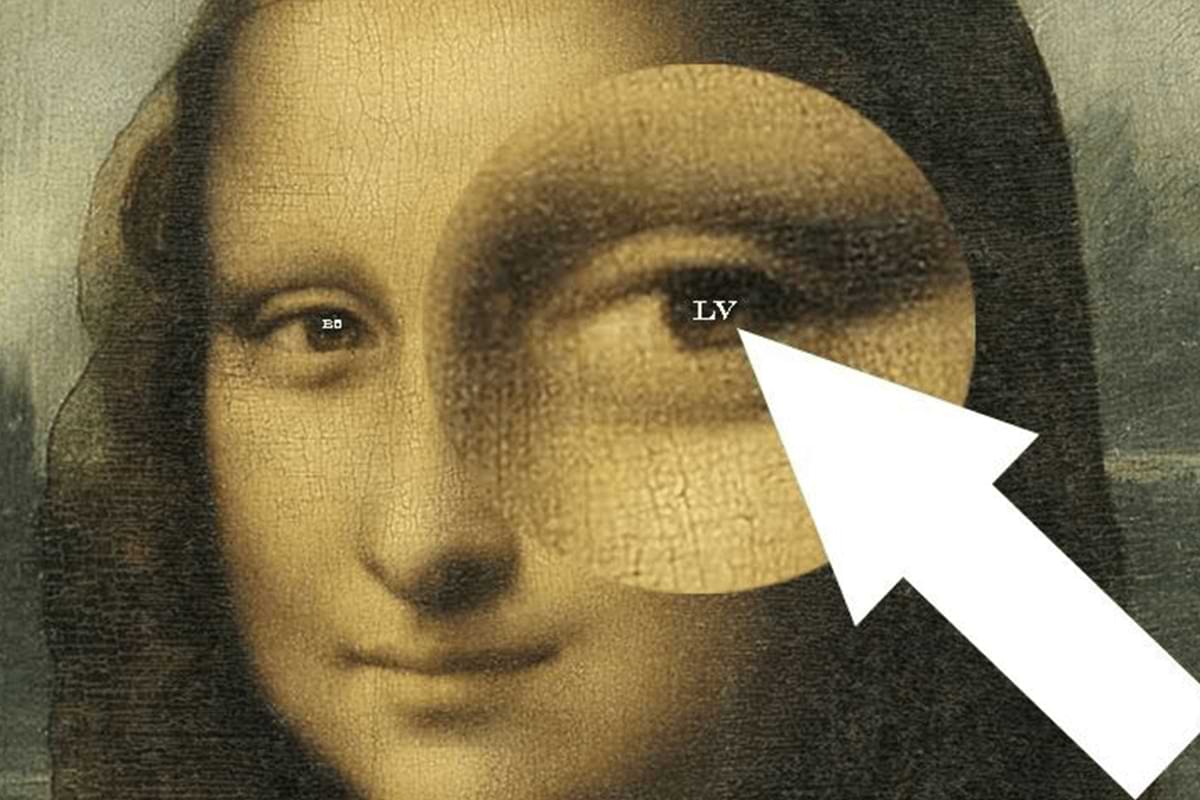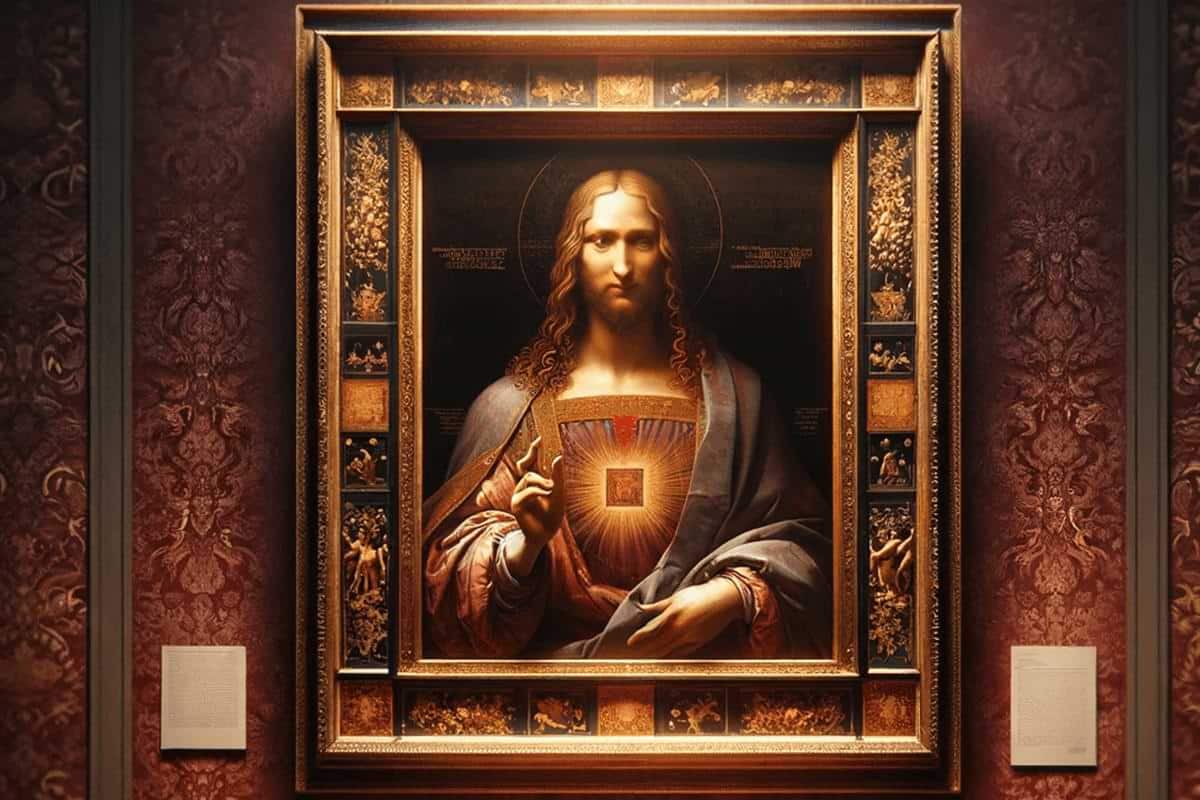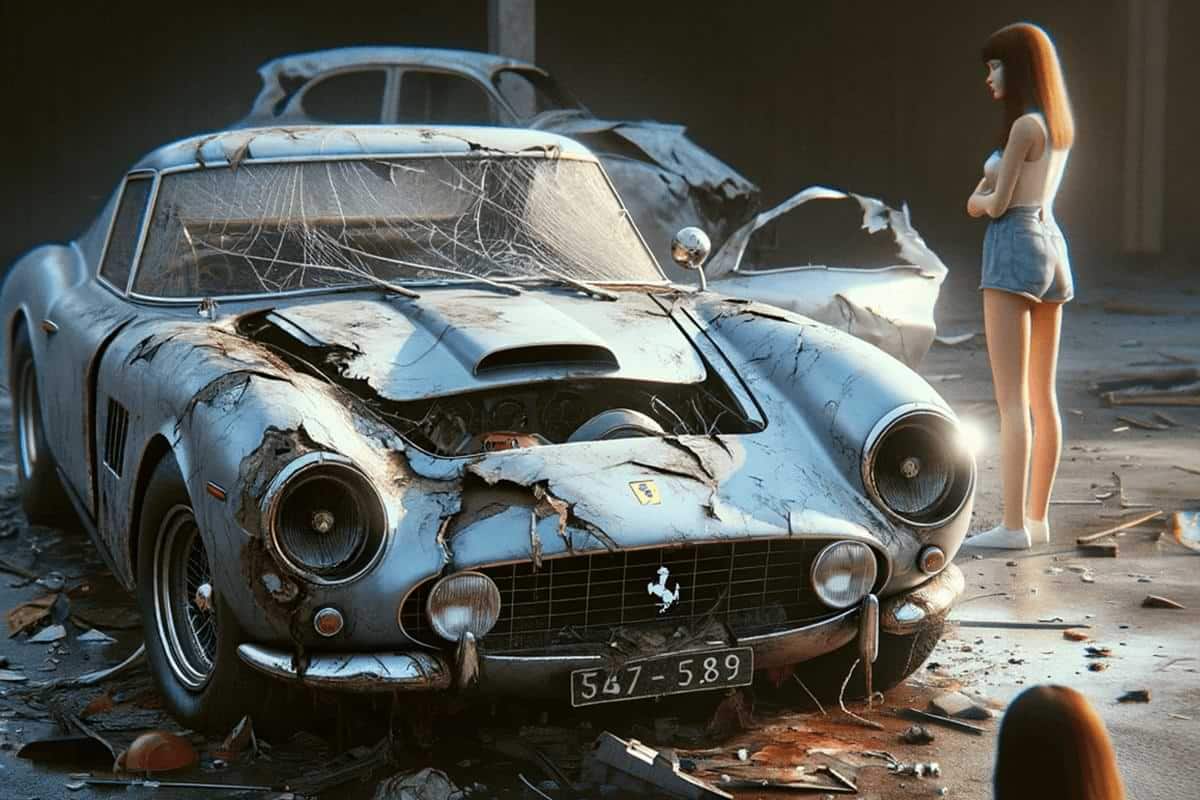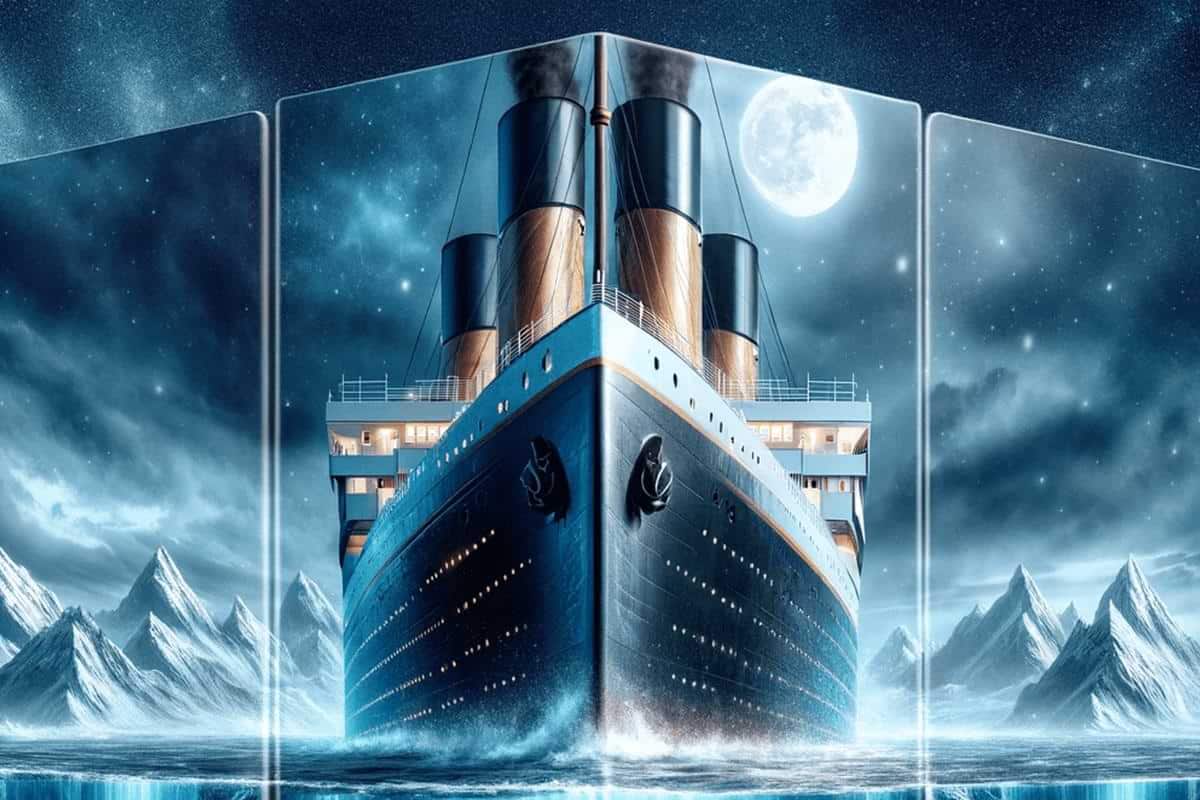For centuries, painters have hidden secrets in their artwork, embedding hidden meanings that escape the casual observer. These secrets can range from private shoutouts to covert messages, lending layers of intrigue to famous paintings that captivate art lovers and cultural enthusiasts for generations. Let’s explore the stories behind the art that continue to fascinate us.
10. Hidden Morse Code in “The Night Watch” – Rembrandt
Rembrandt’s famous painting, “The Night Watch,” is renowned for its masterful interplay of light and shadow. Recently, experts have discovered patterns resembling Morse code within the darker sections of the artwork. It appears to spell out secret messages, which some historians believe may relate to Dutch freedom fighters of the period.
9. Anatomical Precision in “The Creation of Adam” – Michelangelo
Michelangelo’s iconic work on the ceiling of the Sistine Chapel, particularly “The Creation of Adam,” is celebrated for its exquisite detail and complex imagery. Some observers have noted what appears to be a precise depiction of a human brain embedded in the image, sparking discussions about Michelangelo’s knowledge of human anatomy and suggesting a metaphorical link between divine creation and human intellect.
8. The Arnolfini Portrait’s Mirror – Jan van Eyck
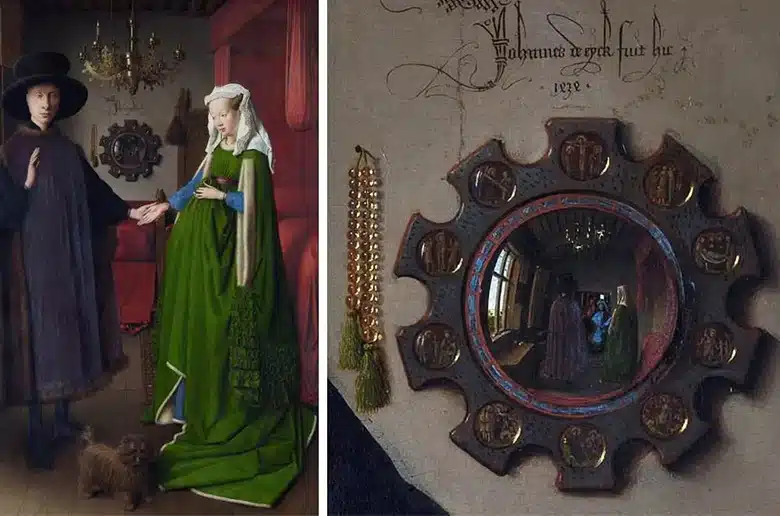
Jan van Eyck’s The Arnolfini Portrait includes a mirror reflecting mysterious figures.
Jan van Eyck’s “The Arnolfini Portrait” is notable not just for its lifelike detail but also for the convex mirror at the center of the composition. The mirror reflects two figures standing where the viewer would be, and it is believed one of these figures could be Jan himself. This inclusion raises questions about the relationship between the artist and his subjects, blurring the lines between reality and artistic representation.
7. A Hidden Companion in “The Ambassadors” – Hans Holbein the Younger
In Hans Holbein’s “The Ambassadors,” beyond the famously distorted skull, there is a lesser-noticed detail: a hidden figure that some interpret as a secret observer of the depicted diplomats. Concealed within the intricate floor patterns, this enigmatic presence adds a layer of mystery to the painting, suggesting themes of espionage or guardianship.
6. Veiled Codes in “The Music Lesson” – Johannes Vermeer
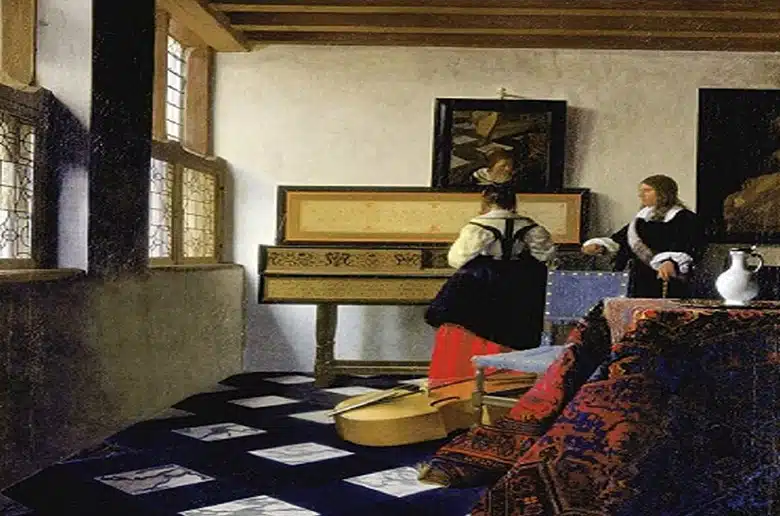
Johannes Vermeer’s The Music Lesson, embedded with symbols of love and fidelity.
Johannes Vermeer’s “The Music Lesson” provides a profound glimpse into intimate human interactions, which are far more complex than they first appear. Recent analyses have uncovered symbols of love and fidelity, such as a subtle depiction of Cupid in the room. This revelation suggests that the painting might be an allegory for romantic and loyal relationships, not merely a depiction of a music tutorial.
5. A Whisper of Revolution in “Liberty Leading the People” – Eugène Delacroix
Eugène Delacroix captured the spirit of the July Revolution in his famous painting “Liberty Leading the People.” This artwork isn’t just a visual depiction; it’s crammed with secret signals advocating for freedom and fairness. Experts discovered that the way Delacroix positioned people and flags actually points to locations where rebels used to secretly meet.
4. Ghostly Shadows in “The School of Athens” – Raphael
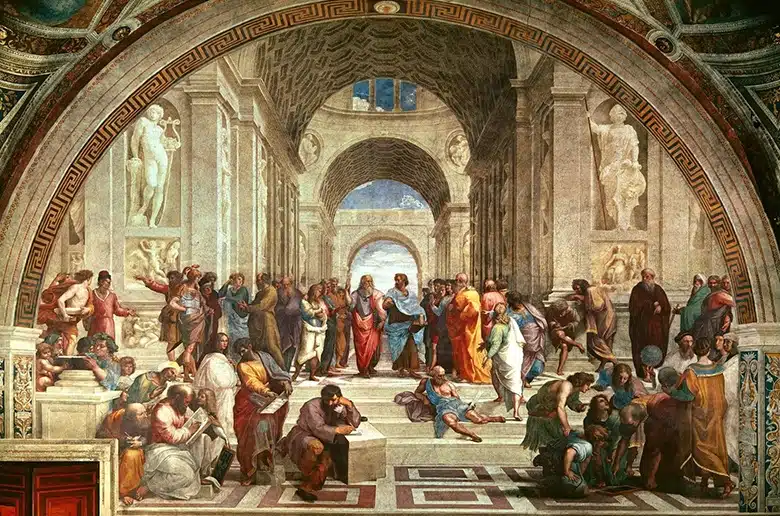
Raphael’s The School of Athens, revealing ghostly figures in the background.
Raphael’s masterpiece, “The School of Athens,” isn’t just a tribute to the brilliant philosophers of ancient Greece—it also sneaks in some ghostlike figures within its architecture. These eerie outlines are elusive; you can only spot them when the light hits just right. This quirk has led to speculation about Raphael’s views on life after death and whether he believed knowledge could live on eternally.
3. Hidden Astrological Symbols in “The Adoration of the Magi” – Leonardo da Vinci
Leonardo da Vinci’s unfinished masterpiece, “The Adoration of the Magi,” conceals intricate astrological symbols that allegedly align with celestial events. This has led some to believe Leonardo was referencing a specific moment in time linked to a sacred event. This theory continues to intrigue both experts and enthusiasts.
2. Secret Societies and “The Garden of Earthly Delights” – Hieronymus Bosch
Hieronymus Bosch’s triptych “The Garden of Earthly Delights” illustrates a spectrum of joy and condemnation. Recent studies have identified symbols that may represent secret societies from Bosch’s time. This suggests he might have been involved with these groups or was commenting on the covert aspects of power and faith.
1. Turbulent Genius in “Starry Night Over the Rhone” – Vincent van Gogh
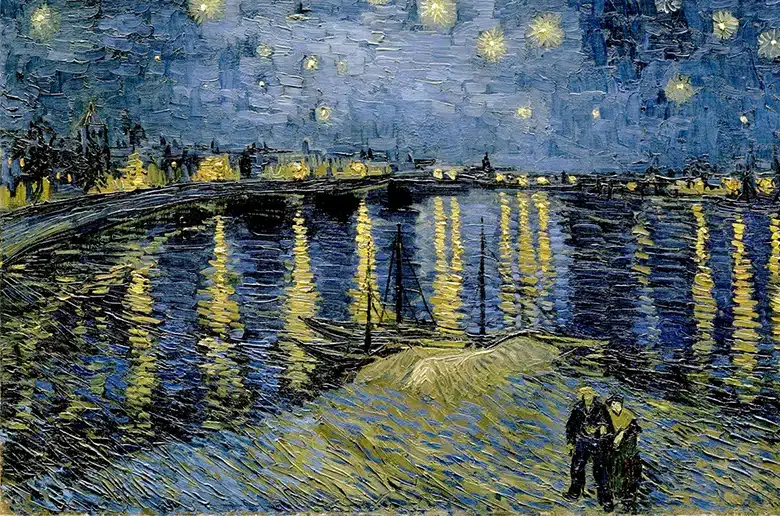
Vincent van Gogh’s Starry Night Over the Rhone, a reflection of the artist’s turbulent psyche.
While “The Starry Night” often gets the limelight, Vincent van Gogh’s “Starry Night Over the Rhone” also harbors profound emotions. The swirling waters reflect van Gogh’s tumultuous mind, while the calmness of the evening sky suggests fleeting moments of tranquility in his troubled life. This juxtaposition vividly portrays his struggles with mental health.
The hidden treasures within these artworks challenge our perceptions and enhance our understanding of art and its history. Discovering each new secret is like uncovering another piece of a vast puzzle, revealing the complexity and depth of these master artists’ works. Peeling back these layers not only increases our admiration for their boundless creativity but also honors the indomitable spirit of human creativity embedded in every piece of art.
